Chairs are for Sitting. PDF is for Printing.

Anyone who has ever dealt with a two-year old has probably yelled, "Chairs are for sitting!" at one time or other. Apparently, this two-year old mentality exists in corporations because too many people forget that "PDF is for printing" and are incorrectly using the Adobe Acrobat PDF format as an HTML tool.
As I stated on a past Daily Sucker page:
Jakob gives great headlines.
I like Jakob Nielsen a lot. He has a great sense of humor and is fun to work with and hang out with at conferences. His essay "PDF Unfit for Human Consumption" once again shows he's the headline master. I bow down.
Well, he followed the article with a strategy for minimizing the problem: Gateway Pages Present PDF Shock.
As you can imagine, the articles caused a bit of consternation — which is the purpose. Don't forget the mantra "Marketing is everything."
Let's look at the issue from the Web Pages That Suck viewpoint:
PDF is just like Flash — it's a tool.

Just as you don't use a chainsaw to create a woodworking joint, you don't use PDF (or Flash or whatever) when what you want can be created using HTML. If you're using PDF because the people you work with are too stupid to learn how to use HTML, get new people. There are lots of unemployed folks who can do the job.
You have to learn how to use the tool.
The only time I've ever touched a chainsaw was the above photo. I would never try to cut down a tree without learning how to use one — unless I wanted a nickname, like "Lefty" or "Stumpy."
Part of the problem lies with Adobe. With Acrobat 6, they've made it extremely easy for any doofus to click a button and create a PDF document. These documents are, I suspect, not optimized and what you end up with is Garbage In, Garbage Out.
If It's Not HTML, You Have to Tell.

Those of you who read Son of Web Pages That Suck were introduced to Grannymaster Flanders, the aging rapper. On page 139 of the book I said:
If a link on your Web site takes you to anything other than an HTML file, you need to let your visitors know before they click. Why? Because they may not have the plug-in installed.
Web Design is the Opposite of a Magic Trick.
A magician's goal is to distract you. On the web, you have to tell everyone what's going to happen — no surprises. It's bad enough that we've got Mystery Meat Navigation, we don't need Mystery Links. That's why you have to tell people that when they click, they're going to get a 2.5Mb PDF file.
If you're a really nice person, you'll also tell your visitors:
- How long the file will take to download. Don't know how to figure out the time? Martindale's File Download Time Calculator can give you an indication. For example, our 2.5Mb PDF example will take approximately 5 minutes and 48 seconds at 56Kbs. There are also plenty of other sites that will tell you how long it takes to download your site. Here's a Google query that I recently ran.
- How to get the plug-in (in case they don't have it for some reason).
Use common design sense.
Unusable PDF documents are probably created by the same folks who create unusable web pages. Remember to:
- Optimize your graphics
- Plan the navigation
I searched Adobe on how to "optimize Acrobat" and received the following list of links.
Unfortunately, as this screen shot demonstrates, Adobe violated a cardinal principle — it doesn't tell you a link leads to a PDF document (look at the status bar). Yes, the page is old, but they're still making the same mistake on the new results pages.
PDF can be a wonderful tool if you don't want people to actually read what you've written.
If I were a government agency and I was legally obligated to provide information I didn't want to provide, I'd create some 250Mb PDF file — and make sure people knew it was going to take 9 hours, 41 minutes and 17 seconds to download.
Special Note: Before you start emailing me that "PDF is not just for printing!" let me say, "You just read a great headline" and were suckered into reading the article.
The Adobe PDF file format and Macromedia Flash have one important fact in common — they both present information the exact way the author intends. HTML and its derivatives can't give you a WYSIWYG experience as good as Flash or PDF. If you're trying to get that "exact print look", then PDF is the way to go.



